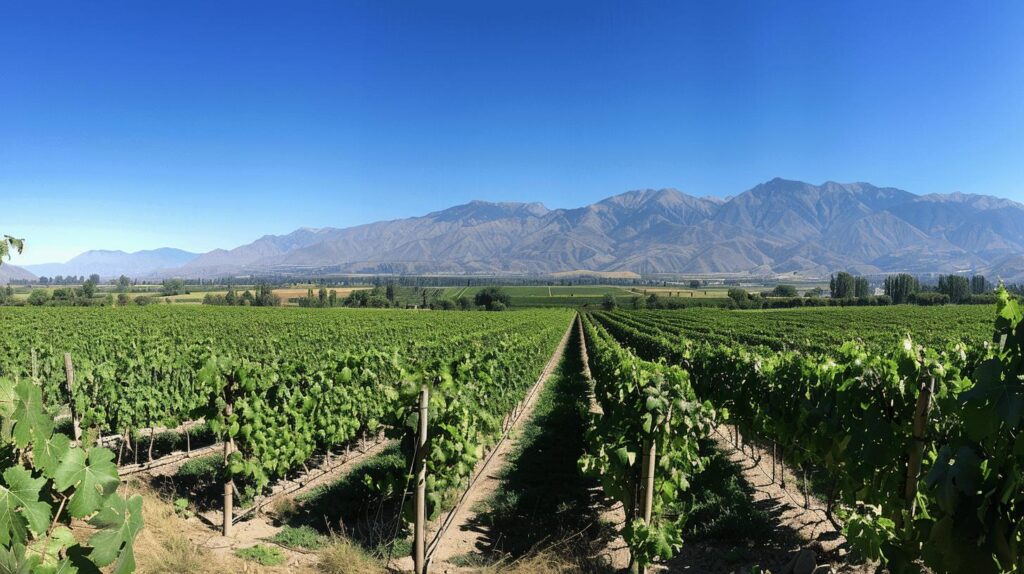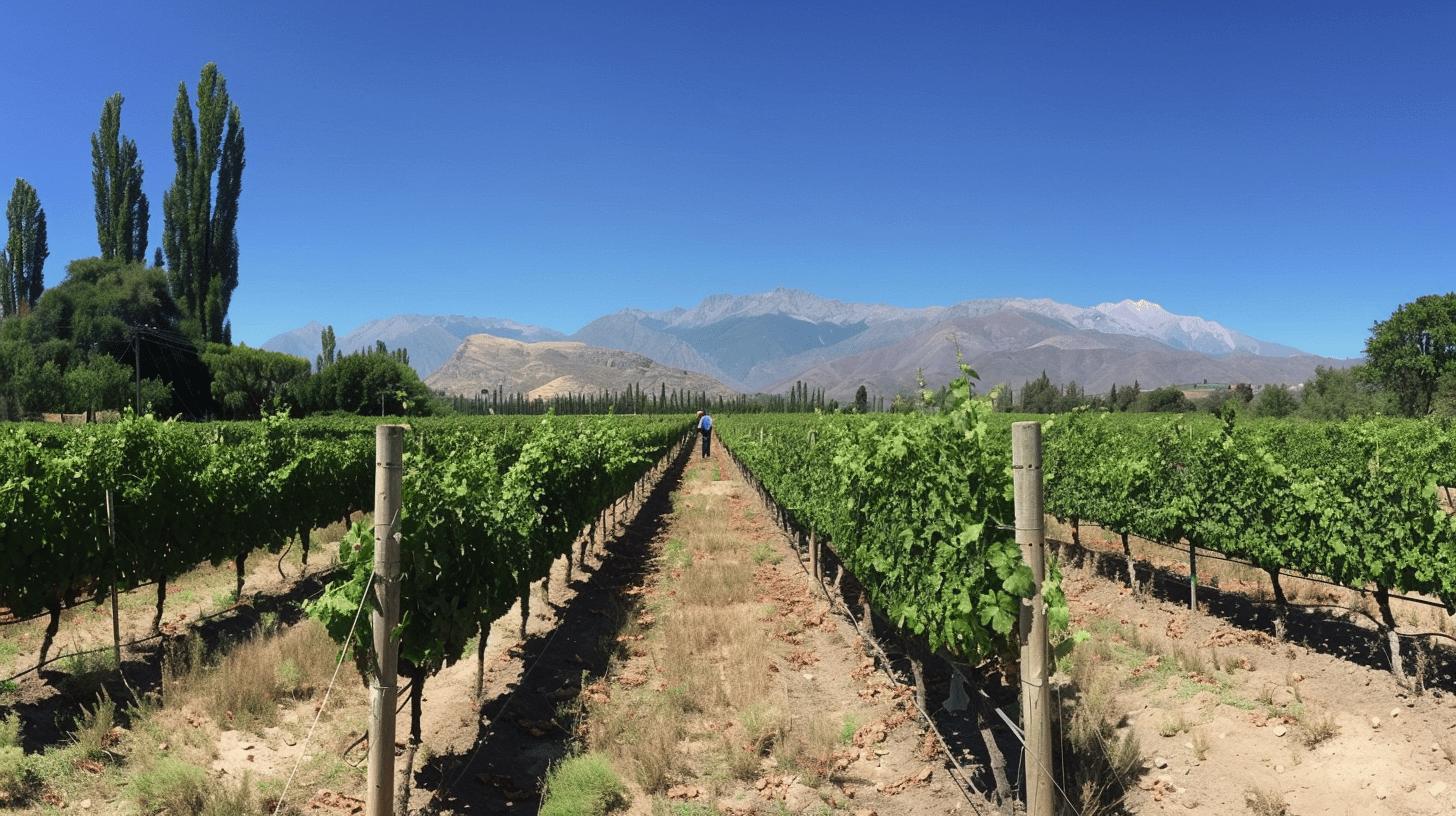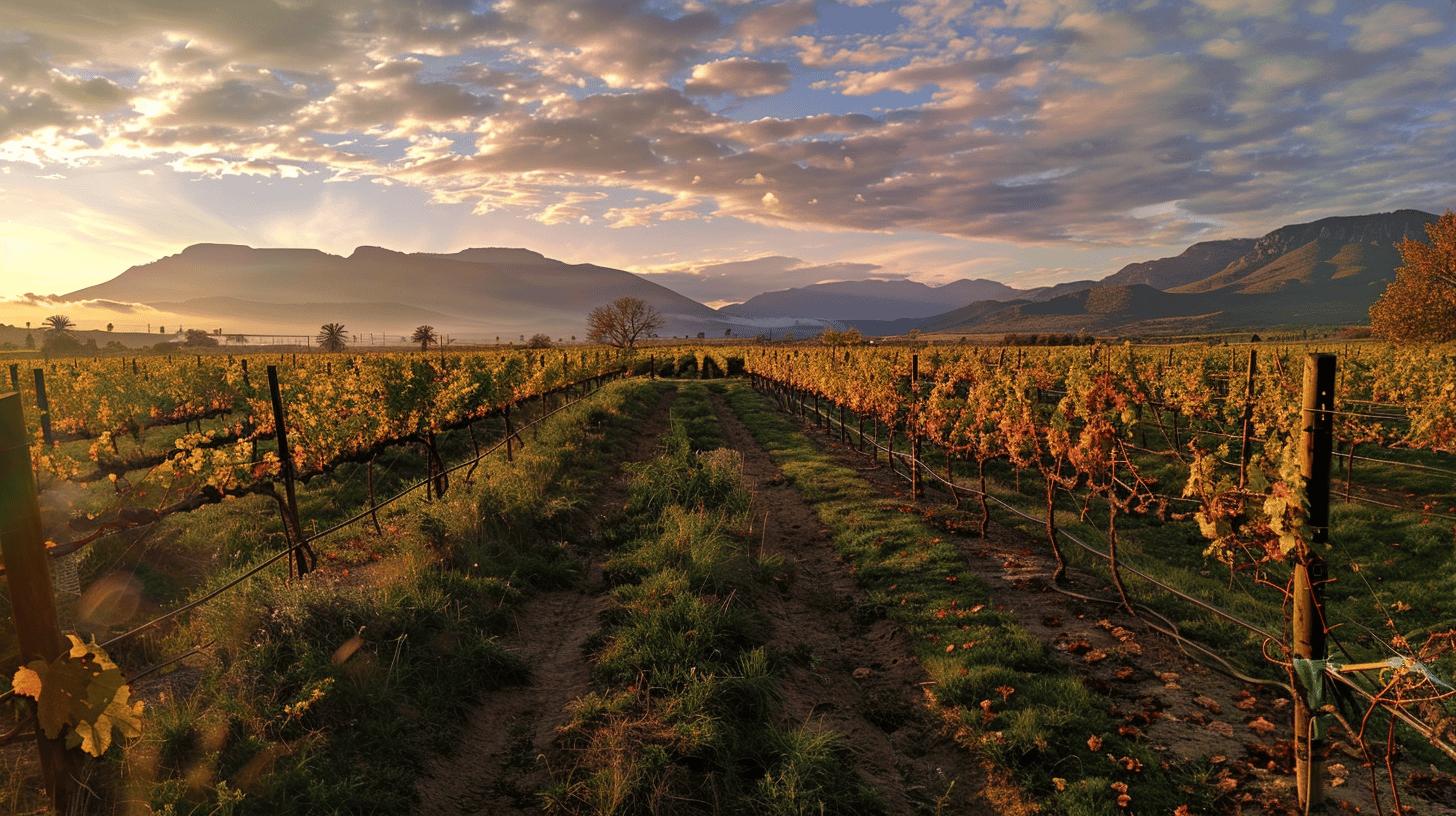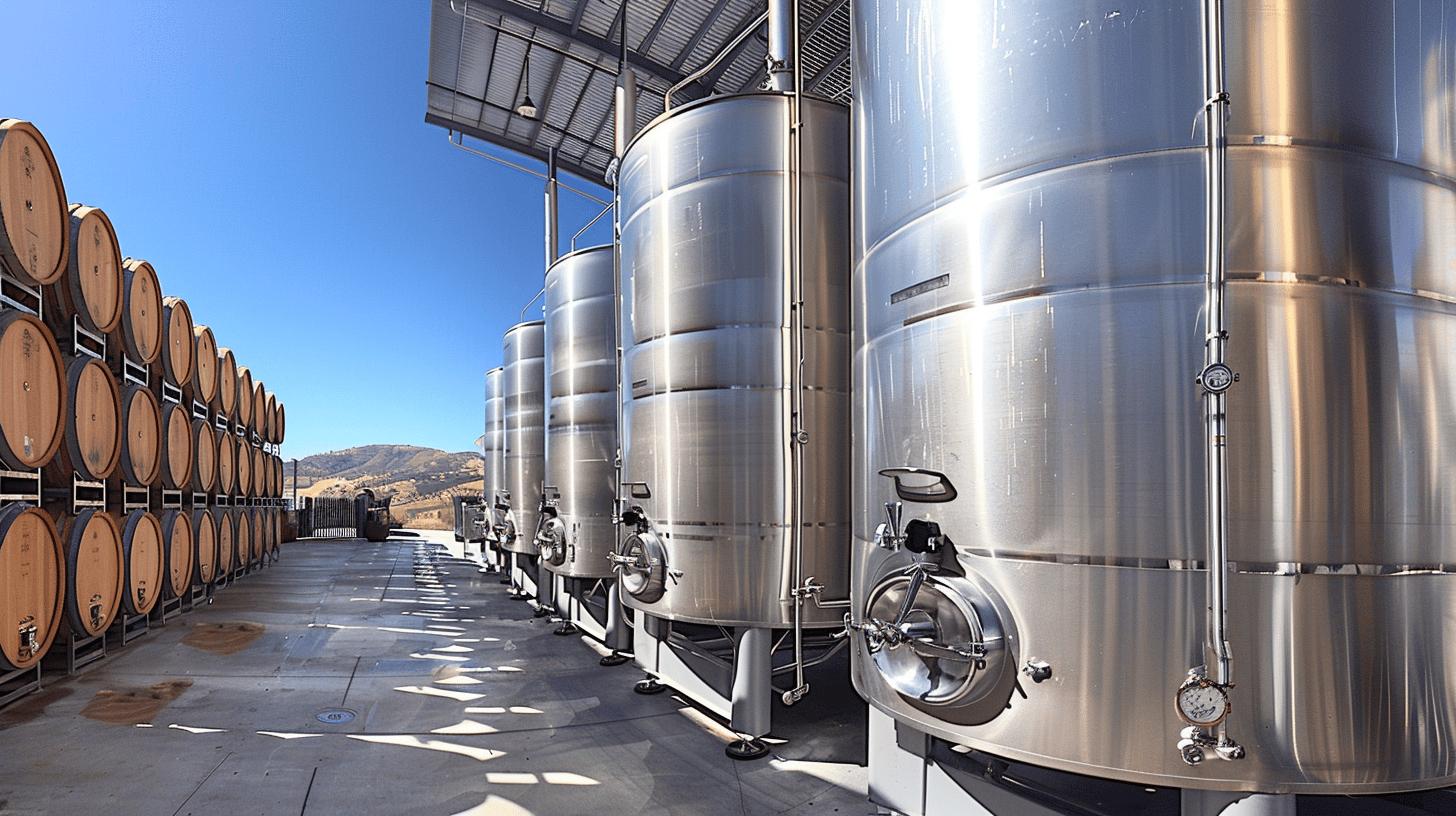Ever wonder why Maipo Valley wines are making such a splash? It’s not just the grapes, folks; it’s rich history too! Picture this: Spanish missionaries arriving in Chile in the mid-16th century, toting grapevines like modern-day Instagrammers carrying cameras.

Pedro de Valdivia and Francisco de Aguirre didn’t just plant vines; they sowed the seeds for what would become a wine renaissance. Ready to swirl, sniff, and sip your way through the fascinating tale of Maipo Valley’s rise? Let’s uncork the story and savor the legacy. 🌱🍷
The Origins of Winemaking in Maipo Valley
Spanish missionaries first introduced grapevines to Chile in the mid-16th century for religious ceremonies. They planted these vines to ensure a steady supply of sacramental wine. Their arrival marked the beginning of Chilean wine production. The missionaries weren’t just spreading faith; they were also cultivating the land, sowing the seeds for what would become a rich winemaking tradition in the Maipo Valley.
Pedro de Valdivia, the first royal governor of colonial Chile, played a significant role in this development. In a letter to the King of Spain, he requested grapevines to support evangelization efforts. Around 1554, Francisco de Aguirre likely planted the first vines in the region. These early efforts laid the groundwork for future vineyard expansion and the growth of the wine industry in the Maipo Valley.
The initial grape variety introduced was known as the “common black grape.” This variety eventually evolved into the Pais grape, which became widespread in Chile. Pais grapes played a crucial role in the early wine industry, providing a robust and reliable crop. Their significance can’t be overstated as they were the foundation upon which Chile’s wine culture was built.
- Introduction of grapevines by Spanish missionaries
- Role of Pedro de Valdivia
- Planting of first vines by Francisco de Aguirre
- Evolution of the “common black grape” into Pais grapes
Key Developments in the Maipo Valley Wine Industry

French winemaking traditions, especially from Bordeaux, played a significant role in shaping the Maipo Valley’s wine industry. The French influence introduced new techniques and grape varieties that were previously unknown in the region.
These traditions helped elevate the quality and reputation of Chilean wines, making them competitive on the global stage. The adoption of French methods marked a turning point, setting the stage for the Maipo Valley to become a premier wine-producing area.
Don Silvestre Errázuriz was a pivotal figure in this transformation. He was instrumental in importing French grape varieties such as Cabernet Sauvignon, Merlot, and Malbec. This introduction diversified the region’s wine portfolio and improved wine quality. Don Silvestre’s efforts didn’t stop at grape variety. He also championed modern winemaking techniques, which further boosted the industry’s standards.
The Phylloxera epidemic in France in the late 19th century had a silver lining for Chile. As French vineyards were devastated, many winemakers sought refuge in South America. Chile, and particularly the Maipo Valley, became a new home for these skilled artisans. Their arrival brought additional expertise and knowledge, contributing to the rapid evolution of Chilean winemaking. The Maipo Valley benefited immensely from this influx of talent and experience.
Notable wineries like Ochagavía and Viña Errázuriz were established during this period. Don Silvestre founded Ochagavía Echazarreta Ochagavia Wines in 1851, laying the groundwork for modern winemaking in the region. Following in his footsteps, Don Maximiano Errázuriz founded Viña Errázuriz in 1870. These wineries became cornerstones of the Maipo Valley wine industry, setting high standards for quality and innovation.
| Key Development | Description |
|---|---|
| French Winemaking Traditions | Introduction of new techniques and grape varieties from Bordeaux. |
| Don Silvestre Errázuriz | Imported French grape varieties and modern winemaking techniques. |
| Phylloxera Epidemic | Led to an influx of French winemakers to the Maipo Valley. |
| Founding of Ochagavía and Viña Errázuriz | Established high standards and innovation in Chilean winemaking. |
The Geography and Climate of Maipo Valley
The Maipo Valley enjoys a Mediterranean climate, characterized by warm days and cool nights. This temperature variation is ideal for grape growing. Warm days help grapes ripen fully, developing sugars and flavors. Cool nights slow the ripening process, preserving the grapes’ acidity. This balance results in wines with both rich flavors and crisp acidity, making the Maipo Valley a prime region for quality wine production.
Vineyards in Alto Maipo are situated at altitudes ranging from 400 to 700 meters. Higher altitudes mean cooler temperatures, even during the day, which further extends the ripening period. This slow maturation allows for the development of complex flavors and aromas in the grapes.
The altitude also provides better drainage, which is essential for healthy vine growth. These conditions are particularly beneficial for red varieties like Cabernet Sauvignon, which thrive in this environment.
The soils in Alto Maipo are another critical factor. They are rocky, with a mix of alluvial sand and volcanic materials. This challenging soil composition forces the vines to work harder to access nutrients. As a result, the vines produce smaller grapes with higher sugar and acid concentrations. These concentrated flavors contribute to the depth and complexity of Maipo Valley wines. The rocky soil also aids in drainage, preventing waterlogging and promoting healthier vines.
- Mediterranean climate
- Altitude of vineyards
- Soil composition
Notable Wineries and Winemakers of the Maipo Valley

Viña Concha y Toro stands as a pillar of the Maipo Valley wine industry. Established in 1883 by Don Melchor de Concha y Toro, this winery has grown to become one of the world’s most powerful wine brands. The founder’s vision was clear: to produce exceptional wines that could compete on an international scale. Today, Concha y Toro exports 80% of its production to 145 countries, cementing its status as a global wine powerhouse.
Santa Rita is another key player in the Maipo Valley. Founded in 1880 by Domingo Fernández Concha, Santa Rita has a rich history intertwined with Chile’s fight for independence. The estate famously sheltered 120 Chilean patriots during the War of Independence, a legacy that lives on in its “120” wine series. The winery has consistently pushed the boundaries of quality and innovation, earning a reputation for producing some of Chile’s finest wines.
Cousiño Macul, established in 1856 by Matías Cousiño, is one of the oldest and most esteemed wineries in the region. The estate has remained in the hands of the Cousiño family for six generations, a rarity in the wine world. Cousiño Macul is renowned for its meticulous approach to winemaking, from vineyard management to the final bottling. Their wines are celebrated for their elegance and complexity, reflecting the unique terroir of the Maipo Valley.
Marcelo Papa, the chief winemaker at Concha y Toro, has played a crucial role in the winery’s success. Overseeing the production of more than 4 million cases of wine, Papa emphasizes a balance between tradition and innovation. His philosophy focuses on enhancing the natural flavors of the grapes while maintaining the integrity of the Maipo Valley’s terroir. Under his guidance, Concha y Toro continues to thrive as a leader in the global wine industry.
| Winery | Founding Year |
|---|---|
| Viña Concha y Toro | 1883 |
| Santa Rita | 1880 |
| Cousiño Macul | 1856 |
Key Grape Varieties and Wine Styles of the Maipo Valley
Cabernet Sauvignon reigns supreme in the Maipo Valley, earning its reputation as the region’s flagship grape variety. The valley’s unique climate and rocky soils provide the ideal conditions for producing robust, full-bodied Cabernet Sauvignons.
These wines are known for their rich flavors, including notes of dark fruits such as blackcurrant and plum, complemented by hints of mint, tobacco, and sometimes even chocolate. If you’re a fan of bold red wines, Maipo Valley’s Cabernet Sauvignon will not disappoint.
Merlot is another significant player in the Maipo Valley’s wine portfolio. While not as dominant as Cabernet Sauvignon, Merlot offers a softer, more approachable alternative. These wines are typically characterized by their medium-bodied structure and flavors of cherry, raspberry, and plum, often with a smooth, velvety texture. Merlot from the Maipo Valley can be enjoyed young but also has the potential to age well, developing more complex flavors over time.
Carmenere, once thought to be extinct, has found a new home in Chile, particularly in the Maipo Valley. Rediscovered in the 1990s, Carmenere has since become a symbol of Chilean viticulture. This grape variety produces wines with deep, rich colors and flavors that include ripe berries, spices, and a distinctive earthy note. Carmenere’s resurgence has added diversity to the Maipo Valley’s wine offerings, making it a must-try for any wine enthusiast.
While red wines dominate the Maipo Valley, white wines also have their place, albeit less prominently. Varieties such as Chardonnay and Sauvignon Blanc are grown in smaller quantities but still produce high-quality wines. These whites are often crisp and aromatic, with flavors ranging from citrus and green apple to tropical fruits. They provide a refreshing contrast to the valley’s robust reds, offering something for every palate.
- Cabernet Sauvignon
- Merlot
- Carmenere
Modern Winemaking Techniques and Innovations in the Maipo Valley

The late 20th and early 21st centuries saw a significant shift in winemaking techniques in the Maipo Valley, with stainless steel fermentation tanks leading the charge. These tanks brought better temperature control and improved hygiene, which are crucial for producing high-quality wine.
By allowing precise regulation of fermentation temperatures, winemakers could preserve the delicate flavors and aromas of the grapes. The result? Cleaner, more consistent wines that stand out on the global stage.
Oak barrels have also played a pivotal role in the evolution of Maipo Valley wines. Aging wine in oak barrels adds layers of complexity and depth. The porous nature of oak allows for a small amount of oxygen to interact with the wine, which softens tannins and enhances overall texture. Additionally, oak imparts subtle flavors such as vanilla, spice, and toast, which round out the wine’s profile. These nuanced additions make oak-aged wines from the Maipo Valley rich and multifaceted.
Beyond stainless steel and oak, other technological advances have further elevated winemaking in the region. Advanced filtration systems and automated sorting machines ensure that only the best grapes make it into the fermentation tanks. Precision irrigation systems help manage water use efficiently, which is particularly important in a region with variable rainfall. These innovations collectively contribute to higher quality and more sustainable wine production.
Sustainability and organic practices are becoming increasingly mainstream in the Maipo Valley. Many wineries are now focusing on reducing their environmental footprint through organic farming, biodynamic practices, and renewable energy sources.
These efforts not only protect the environment but also result in healthier vines and, ultimately, better wine. The move towards sustainability reflects a broader global trend and highlights the Maipo Valley’s commitment to future-proofing its wine industry.
- Stainless steel fermentation tanks
- Oak barrels for aging
- Temperature control improvements
- Sustainable practices
The Current Status and Future of Maipo Valley Wines
Chile stands as the 5th largest wine exporter and the 7th largest producer globally. This impressive ranking reflects the country’s commitment to quality and innovation in winemaking. Over 60% of Chilean wines are exported, showcasing their global demand and appeal.
Among these, Maipo Valley wines hold a special place, celebrated for their robust flavors and exceptional quality. The region’s wines have carved out a strong presence in international markets, further solidifying Chile’s status as a wine powerhouse.
Maipo Valley wines are particularly renowned for their robust red wines, especially Cabernet Sauvignon. These wines are lauded for their depth and complexity, often described as rich and full-bodied. The unique terroir of the Maipo Valley plays a crucial role in developing these flavors, with the combination of climate, altitude, and soil creating ideal conditions for grape growing.
This reputation for producing high-quality wines has made the Maipo Valley a key player in Chile’s wine industry and a favorite among wine enthusiasts worldwide.
Looking ahead, the future of the Maipo Valley wine industry appears promising. One of the key trends is the exploration of diverse terroirs within the region. Winemakers are increasingly experimenting with different microclimates and soil types to uncover new flavor profiles and enhance the complexity of their wines. Sustainable practices are also gaining traction, with many wineries adopting organic farming methods and renewable energy sources.
This focus on sustainability not only benefits the environment but also contributes to the health and quality of the vineyards. Continued emphasis on quality remains a priority, ensuring that Maipo Valley wines maintain their esteemed reputation on the global stage.
- Exploration of diverse terroirs
- Sustainable practices
- Continued focus on quality
Final Words
From the arrival of Spanish missionaries with grapevines to the significant influence of French winemaking traditions, the Maipo Valley has a rich wine history. Key figures like Pedro de Valdivia and pioneers such as Don Silvestre Errázuriz played crucial roles.
Today, the region’s geography and climate, coupled with modern techniques, have solidified its reputation for outstanding wines. The Chilean Wine Renaissance: The Historical Development of the Maipo Valley highlights this journey beautifully.
So, grab a glass and toast to the vibrant legacy and exciting future of Maipo Valley wines. Cheers to tasting history in every sip!
FAQ
What is the history of the Maipo Valley?
Chilean wine production began in the mid-16th century with Spanish missionaries bringing grapevines for religious ceremonies. Pedro de Valdivia requested vines from the King of Spain. Francisco de Aguirre likely planted the first vines around 1554.
What is the history of the wine industry in Chile?
Chilean wine history began with Spanish missionaries in the mid-16th century. Pedro de Valdivia and Francisco de Aguirre played crucial roles in introducing the first grapevines. The “common black grape” evolved into the Pais grape.
What is special about Chilean wine?
Chilean wine benefits from a phylloxera-free environment, a mix of old and new world winemaking traditions, and unique terroirs. This combination creates high-quality wines, particularly robust reds like Cabernet Sauvignon and Carmenere.
Why is Chile phylloxera free?
Chile is phylloxera-free due to its natural geographical barriers: the Andes Mountains, the Atacama Desert, the Pacific Ocean, and Patagonia. These barriers have prevented the pest from reaching and affecting Chilean vineyards.

